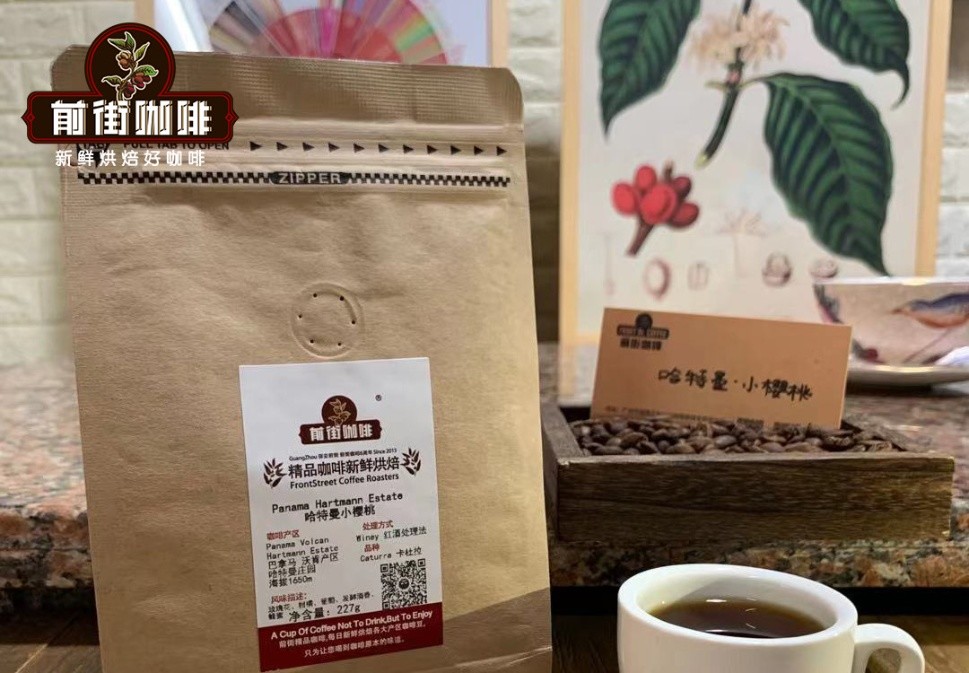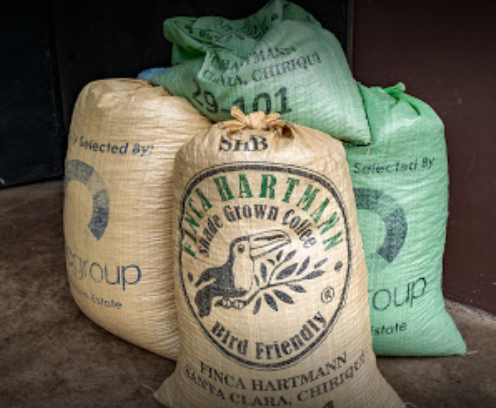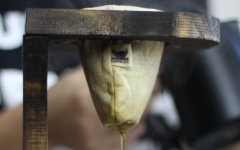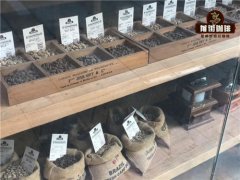A variety of iron pickup like bean Patch introduces the flavor of Parkmara coffee beans in Hartman Manor, Panama.
Hartman Manor is located in the Balu volcanic area, the soil is rich in nutrients of volcanic soil, towering original trees become the best shade planting environment, shade planting coffee grows slowly, can brew higher sweetness and brighter acidity. The alpine microclimate of Chiriqui Volcan has also become an excellent basis for Hartman coffee. A wide variety of beans are grown: Typica, Caturra, Catua í, Bourb ó n, Pach é, Pacamara, c, etc., and more Geisha has been planted in recent years.
I believe everyone has heard of coffee varieties such as Iron pickup, Kaddura, Kaduai and so on. On the front street, there is a Kaduai cherry coffee bean from Hartman Manor in Panama, treated with red wine. Overall shows citrus, grape fruit flavor, with fermented wine and honey sweetness.
If you have a buying partner, you can try it first according to the cooking advice in Qianjie.
Recommended cooking method: hand flushing
Filter cup: v60 filter cup
Water temperature: 90-92 °C
Amount of powder: 15g
Powder / water ratio: 1:15
Degree of grinding: medium and fine grinding (Chinese standard No. 20 screen pass rate 80%) flushing and cooking method: segmented extraction
Steam with 30 grams of water for about 30 seconds, when 125 grams of water is injected around the center of the small flow, continue to inject water to the end of 225 grams when the water level is about to expose the powder bed, and remove the filter cup when the water level is about to expose the powder bed. The extraction time is 2 minutes 39 percent 00 ".

Qianjie here focuses on the less common natural mutations of Pache Pachet, which is a Typica variety, which makes it highly dwarfed. It first appeared in Guatemala, but its short height makes it helpful to farmers during the harvest season.
Marago Gippe, also known as "elephant bean", is a very good variety of coffee, but it is easy to get leaf rust and the productivity is very low. He has a big coconut, which is slender in shape. There is always good quality potential in high altitude areas, but a nematode and leaf rust are harmful. Is the natural mutation of iron pickup, because the productivity is relatively low, so generally switch to pacamara.
Pacamara is a hybrid created by the Coffee Institute (ISIC) in El Salvador in the late 1950s. Created by crossing the Pacas variety (El Salvador mutant of bourbon) with Maragogype, its name comes from the first four letters of each parent.
It has the common characteristics of both parents. Its relatively short stature and high productivity are inherited from the Pacas variety, and like Maragogype, Pacamara is famous for its big cherries. It tends to be more productive than Maragogipe and can produce very attractive cups.

It is very sensitive to coffee leaf rust. The varieties are uneven; plants are unstable from one generation to the next.
The cup score of this bean reaches 90.5, and its flavor is shown as: raisin, blueberry, orange, papaya.
Near the Panama Macedonian volcano is a Pakamara variety of coffee beans.
The drying process seems simple: pick the fruit and place it in the sun until it changes from red to brown to near the back, then peel off the thick dry outer layer in one step to expose the mung beans. This is a method suitable for arid areas, where sunlight and heat can dry the seeds in the whole pericarp.
It is often called "natural coffee" because it is simple and the fruit remains intact and undisturbed, a bit like drying grapes into raisins. Because it requires the least investment, the dry process is the default way to produce cheap commodity-grade coffee in areas with the right climate, drying fruits and seeds.
But it fails in wet or humid areas. If the drying rate is not fast enough, the fruit will degrade, rot or mildew.
Dry processed coffee can also be very inconsistent. If you want a clean, sweet, full-bodied cup, DP requires more manual labor than wet. Even the most careful pickers pick immature or semi-ripe green coffee from branches when picking red, ripe cherries. If these are not removed on the first day of drying, the green will turn brown, making it difficult to distinguish it from ripe fruit.
Important Notice :
前街咖啡 FrontStreet Coffee has moved to new addredd:
FrontStreet Coffee Address: 315,Donghua East Road,GuangZhou
Tel:020 38364473
- Prev

Can you find the three signs of coffee from the taste? How does astringency come from? how to solve the problem of over-extraction of coffee?
The first point is that coffee has an overwhelming bitterness which is a misunderstood state of flavor. The best coffee in the world still has a bitter taste, usually in dark chocolate, spices or wood. These lower notes make the taste more rounded, balance sharper acidity, and are usually pleasant when the cup is full. This is not the bitterness we are talking about.
- Next

Yunnan Sunshine Katim Coffee beans Flavor characteristics and how to flush? The main coffee growing areas in China?
The typical layout of coffee farms in southwestern Yunnan is 5000 coffee trees per hectare, growing in a sunny plantation style. Catimor is the preferred variety for farmers in the region and has been selected for its low susceptibility to disease and higher and faster yields. Farmers use washing and harvesting methods, which in recent years have included mechanical mucus removers. For a long time, Yunnan, with its fertile plateau,
Related
- Detailed explanation of Jadeite planting Land in Panamanian Jadeite Manor introduction to the grading system of Jadeite competitive bidding, Red bid, Green bid and Rose Summer
- Story of Coffee planting in Brenka region of Costa Rica Stonehenge Manor anaerobic heavy honey treatment of flavor mouth
- What's on the barrel of Blue Mountain Coffee beans?
- Can American coffee also pull flowers? How to use hot American style to pull out a good-looking pattern?
- Can you make a cold extract with coffee beans? What is the right proportion for cold-extracted coffee formula?
- Indonesian PWN Gold Mandrine Coffee Origin Features Flavor How to Chong? Mandolin coffee is American.
- A brief introduction to the flavor characteristics of Brazilian yellow bourbon coffee beans
- What is the effect of different water quality on the flavor of cold-extracted coffee? What kind of water is best for brewing coffee?
- Why do you think of Rose Summer whenever you mention Panamanian coffee?
- Introduction to the characteristics of authentic blue mountain coffee bean producing areas? What is the CIB Coffee Authority in Jamaica?

